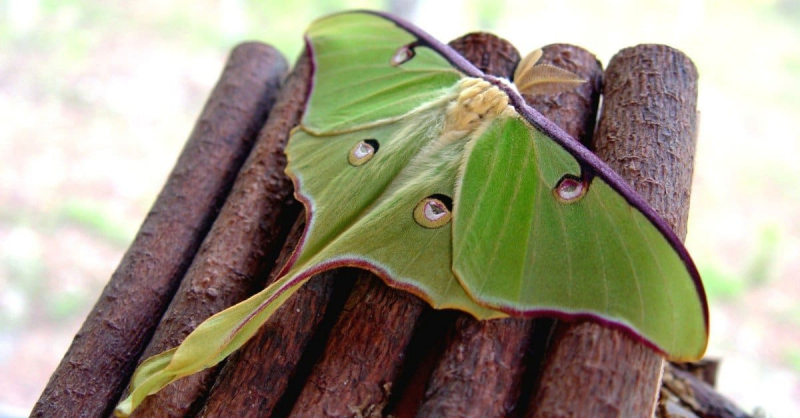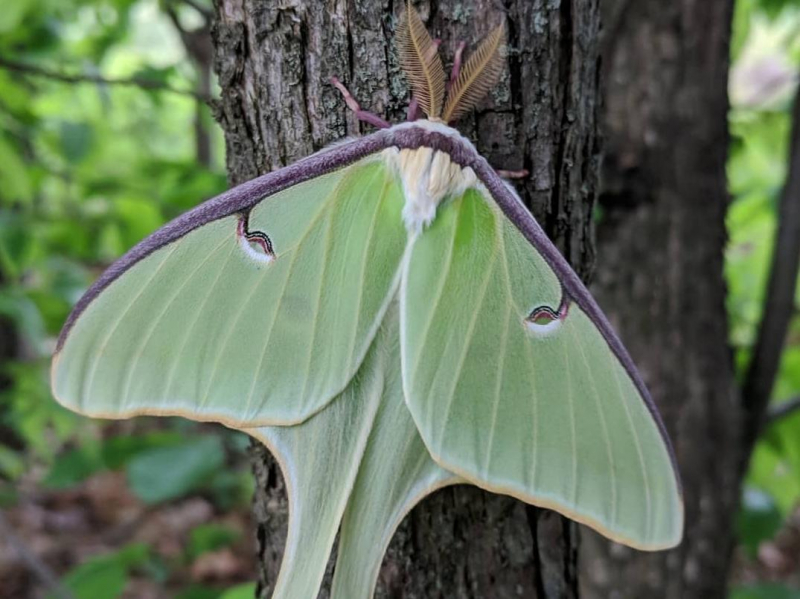Luna Moth

The Luna Moth (Actias luna) also known as the American moon moth is a Nearctic moth in the family Saturniidae, subfamily Saturniinae, a group commonly known as giant silk moths. It has a white body and wings that are lime green in color. Additionally green are the caterpillars' larvae. One of the bigger moths in North America, it typically has a wingspan of about 114 mm, but it can reach 178 mm. In Canada, there is only one generation annually, with the winged adults first showing in late May or early June. In the southern United States, however, there are two or possibly three generations annually, with the first appearance occurring as early as March.
As defense mechanisms, larvae emit clicks as a warning and can also regurgitate intestinal contents, confirmed as having a deterrent effect on a variety of predators. It is believed that the extended tails of the hindwings mislead predatory bats' echolocation detection. Luna moths and other native moths appear to have been negatively impacted by a parasite fly that was purposefully brought to North America to function as a biological control for the invasive spongy moth.











